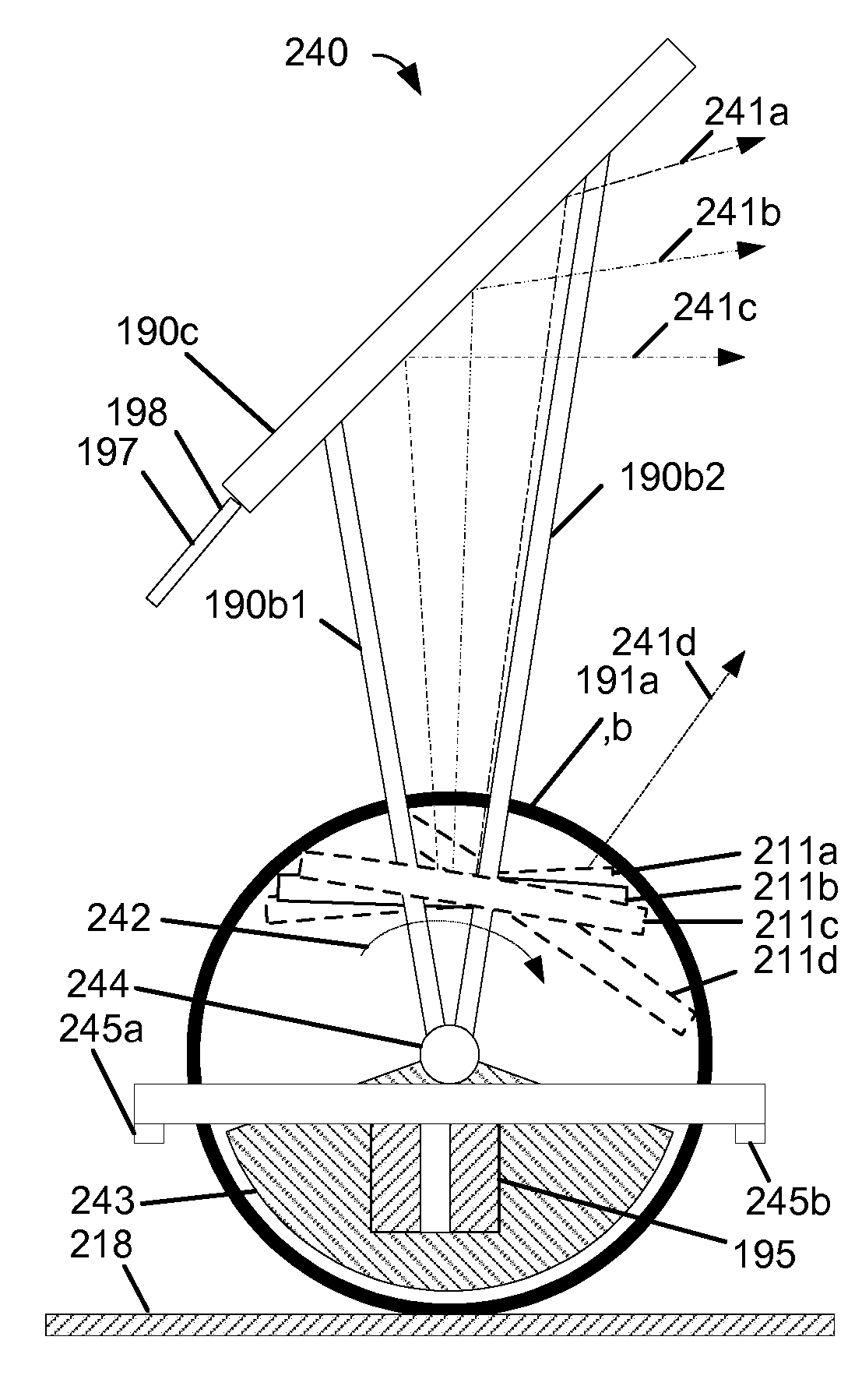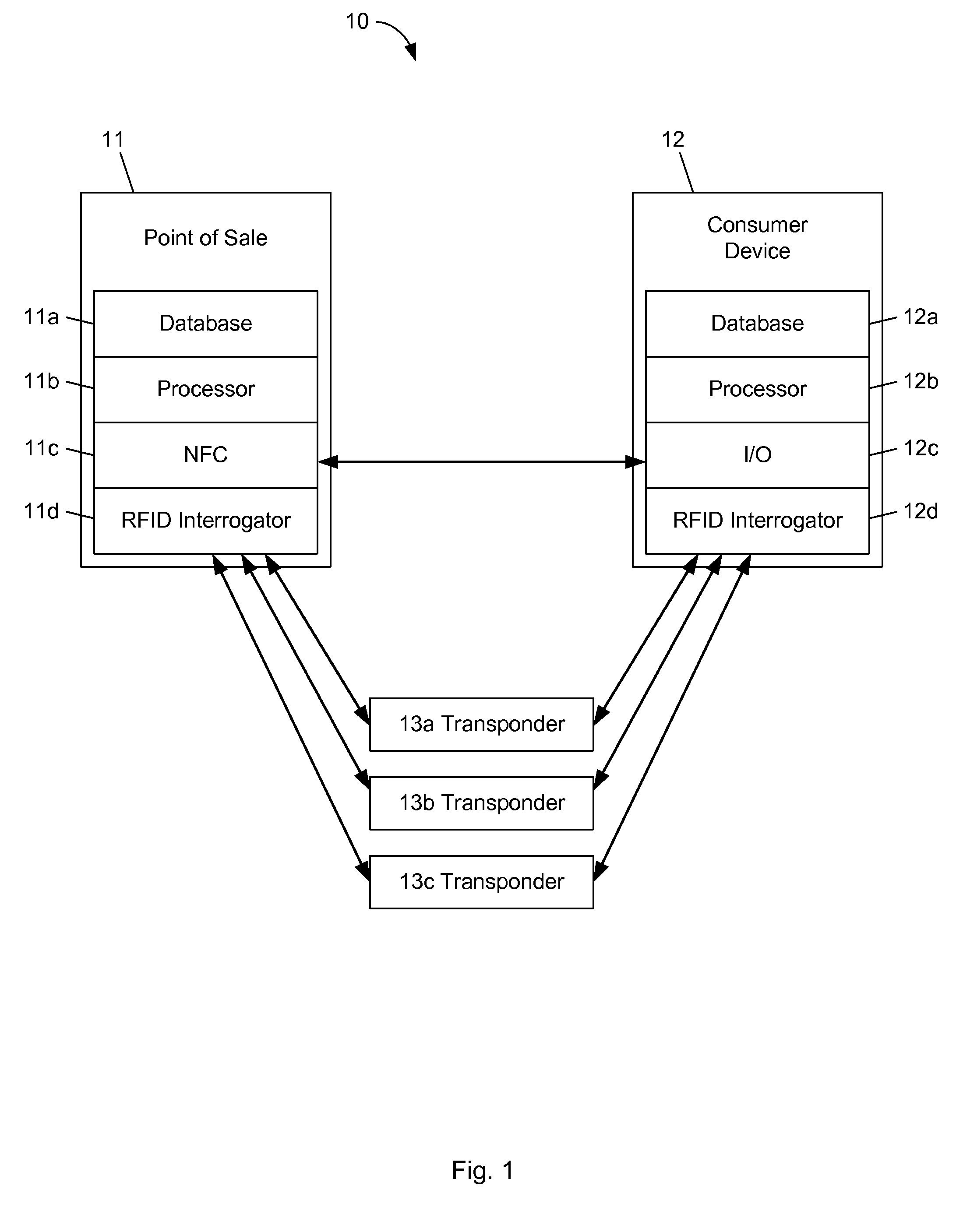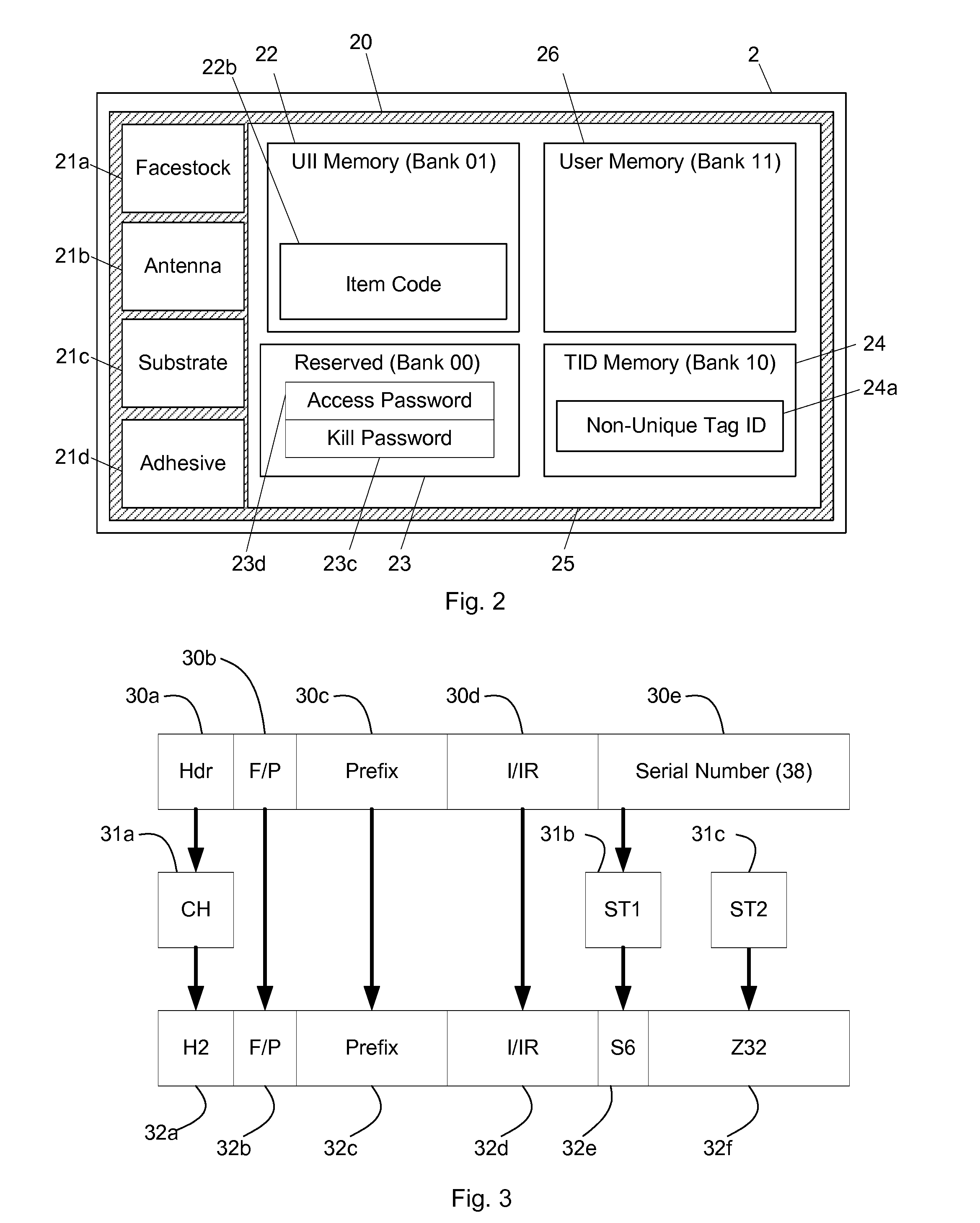RFID and robots for multichannel shopping
a robot and multi-channel shopping technology, applied in direction finders using radio waves, instruments, non-resonant long antennas, etc., can solve the problems of insufficient prior art address of rfid by consumers using their rfid-tagged merchandise at home, lack of automated inventory measurement systems, battery-based active transponders, etc., and achieve the effect of reducing the cost of rfid transponders
- Summary
- Abstract
- Description
- Claims
- Application Information
AI Technical Summary
Benefits of technology
Problems solved by technology
Method used
Image
Examples
Embodiment Construction
[0059]The present invention provides systems, methods, and devices for bridging online and physical retail environments and to automatically detect accurate inventory location. Consumers are utilizing online shipping to research what they want and save their choices in an online bag or cart. Downloading their bag of selected items into a mobile phone is a step in this consumer-centric shopping process. The next step is for an efficient high-touch shopping experience where the shopper and the retailer cooperate to experience more of what they both want by using less time from the shopper and the store employees. Both the shopper and the store spend less time and money in the steps that are required to complete a sale, and in the optimal case, the retailer sells more goods than without the present invention.
[0060]Making reference to various figures of the drawings, possible embodiments of the present invention are described and those skilled in the art will understand that alternative...
PUM
 Login to View More
Login to View More Abstract
Description
Claims
Application Information
 Login to View More
Login to View More - R&D
- Intellectual Property
- Life Sciences
- Materials
- Tech Scout
- Unparalleled Data Quality
- Higher Quality Content
- 60% Fewer Hallucinations
Browse by: Latest US Patents, China's latest patents, Technical Efficacy Thesaurus, Application Domain, Technology Topic, Popular Technical Reports.
© 2025 PatSnap. All rights reserved.Legal|Privacy policy|Modern Slavery Act Transparency Statement|Sitemap|About US| Contact US: help@patsnap.com



